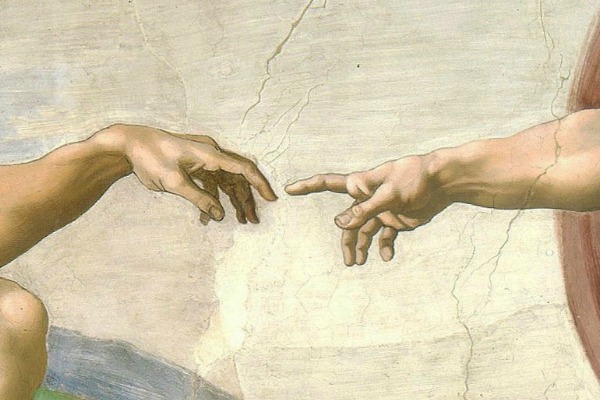
Kenan Camurcu
One of the most popular car modifications lately is the use of high-lumen, uncapped headlights. They create an intensely bright beam that blinds oncoming drivers until they pass. To understand why this modification is deemed necessary when standard headlights adequately illuminate the road, one must seek the answer in why traffic signs are riddled with bullet holes. The headlight modification isn't about seeing the road better; it's about subjugating, humbling, and asserting dominance over oncoming drivers by blinding them. It is, unequivocally, an act of aggression.
Recall the incident where a daughter of a cult leader, driving an astronomically priced SUV with flashing lights and sirens, blatantly disregarded traffic laws. The issue there was not merely her privilege of driving a quarter-billion-lira SUV—a luxury few in Turkey can afford—but her harassment of other vehicles with flashing lights and sirens, forcing them to pull over. Clearly, she sought to display power and revel in the ugly confidence derived from political backing. Yet, the State (yes, with a capital S) immediately demonstrated that it had no role in such a display of power, disregarding the cost of damaging its organic ties with the conservative clique, and promptly penalized her. Or perhaps it was one of those exemplary decisions by an authority that generally allows its pious base—prone to domineering others—a relative degree of freedom, occasionally curbing excesses to signal its distance from radicalism; I cannot be sure.
The Use of the Adhan for Display of Dominance
The recitation of the adhan (call to prayer) through loudspeakers at the highest possible volume also falls into this category. It is an undisguised exhibition of dominance.
In the world of sociopolitical religiosity, where Islam is an identity, the adhan no longer holds the same meaning as the one recited for believers in the Prophet's mosque. The adhan during the Prophet's time and for the believing community then was functional, serving as a call to prayer. The adhan of contemporary Islam, however, signifies a daily, five-time reminder of power and hegemony to "the other." This can be likened to the transformation of mosques—copied from Byzantine temples, a legacy of Muawiyah—which now bear no resemblance to the Prophet's functional mosque. This is also the reason for the radical alteration of worship architecture.
When the Prophet constructed his mosque, there were approximately 1700 adult men and women in Medina. The mosque itself was about 1,000 square meters, accommodating around 500 people for prayer or open consultation (Zuhayli, 1985: 3/333). In the commentary on Qadi Abu Bakr Ibn Arabi's (d. 1148) Awasim mine'l-Qawasim, it is stated that "the mosque was a narrow area in the time of the Prophet," and that its current size was achieved through expansion during Caliph Uthman's time (1991: 113). In other words, it never occurred to anyone, including the Prophet, that such a simple and modest mosque was unfitting for Islam or that a more magnificent and ostentatious temple should be built to honor God.
An Ummah That "Islamized" Byzantium in Its Entirety
Muslims after the Prophet, through Muawiyah, "Islamized" Byzantium—the heir to ancient Greece and Rome—in almost every conceivable way. Thus, it is fitting to compare the colossal concrete structures, often referred to as "mosques," where not even a single row of prayer can be fully occupied, with the magnificent Greek and Roman temples built to appease deities. The incessant construction of mosques, regardless of need, is motivated by nothing other than this. If it were truly about the need for prayer, such colossal and ornate reinforced concrete structures would not be built, nor would they be called "the house of God."
Mustafa Islamoğlu's observations on the transformation of the mosque into a cami (congregational mosque) during the Umayyad caliphate are striking. The "ummah" (Muslim community), which spends millions of liras—money that could be utilized for far more beneficial endeavors—on reinforced concrete structures dubbed "the house of God," is now plastering "I think He forgives, why don't you come and talk?" posters on the doors of these buildings, running marketing and promotional campaigns. This craze is proof that the cami is not the Prophet's mosque. It implies that people have no other recourse to speak with God than to enter that specific place and structure. This represents a new theological school of thought. In this context, the reinforced concrete structure becomes the place where God addresses people. Consequently, a religious bureaucracy is necessary to make God "speak." And these are precisely the officials of the mosque.
The crude construction cost of mosques, which are built every few steps, is estimated at 20,000 Turkish Liras per square meter as of 2025. For example, the Çamlıca Mosque cost 1.1 billion liras at 2019 prices, paid for by the public's taxes. Usage statistics clearly show that its purpose was not to meet the prayer needs of the populace. I had an interesting experience inside that structure. After its inauguration, I went to see the mosque. When prayer time arrived, a female security guard was moving women away from the main prayer area, and I objected, stating that such things were not done in the Prophet's mosque. Immediately, someone from the mob that gathered around me shouted, "This isn't the Prophet's mosque; it's the Çamlıca Mosque!"
The Misogynistic Basis of the "Mum Söndü" Slander
The "mum söndü" (candle extinguishing) slander leveled against Alevis—apart from Sunnism's various baseless accusations against all dissenters—undoubtedly stems from the fact that women and men pray together during zikr (remembrance) in Cemevis, much like in the Prophet's mosque. The slander's true essence is misogynistic. They are, in fact, reacting to women's free presence in places of worship. Regarding the origins of this slander, there is an excellent article by Doğan Kaplan titled "On the Historical Origins of the 'Mum Söndü' Slander Against Alevis"
The Prophet's mosque was like the Alevis' Cemevi. Ibn Abbas describes the environment thus: "A woman who could have been the most beautiful of people used to pray behind the Prophet. Some men would pray in the back rows to see her. Others would move to the front row to avoid seeing her. Some even looked at her from under their armpits when they bowed" (Tirmidhi 3122, Ibn Majah 1046, Ahmed 2783). Sending women to invisible places at the back, or even directing them to "women's mosques" outside or on the ground floor of the building and preventing them from entering the main prayer hall, are practices that emerged after the transformation of the mosque into a cami.
Before delving into political authoritarianism, one must carefully observe how religious despotism is constructed at this level. These are examples of how power-seeking behavior is disseminated among the populace or entrusted to sociology.
A Guardian Sociology for Authoritarianism
Authoritarianism cannot sustain itself without a sociology to act as its guardian. Years ago, in an interview, I spoke of the aspiration of Islamists and conservatives, hand in hand, to establish a "Tikrit regime." The task of protecting and preserving despotism built on a nepotistic foundation now falls to those implicated in that transgression. For this, religious despotism becomes an urgent necessity. The silencing of differing approaches to religious dogmas and beliefs through lynchings, and sadly, the occasional complicity of state power in this crime, has become commonplace. Therefore, without cultural change and reform taking root, there is little that can be achieved through political power.
Bakunin, in his discourse on change, insisted that the issue was cultural, not political, and that change must occur from the bottom up. He was enraged by Marx's various intrigues to inject the political problem into the socialist movement (the International). He accused Marx of using the proletariat as a tool for political struggle. "Mr. Marx," he said, "is almost a new Moses. He thought that when he wrote his religious commandments into the program of the International, the masses would rush to join" (Dolgoff, 1998: 318).
It is difficult to say that Islamism has disentangled itself from the political problem. Throughout history, and in recent times, scholars, thinkers, and intellectuals who focused on cultural issues are fewer than the fingers on one hand.
Islamism's Obsession with Shaping Society
From the second half of the 19th century onwards, Islamism was an ideology that, through constitutional movements initiated in the Ottoman Empire, Iran, Egypt, Syria, and Tunisia, sought to usher in an era of equality, justice, freedom, and political representation in Muslim countries, and largely succeeded. The pioneers of this movement were also religious innovators. The essence of religious innovation, expressed through concepts like "tajdid" (renewal), "islah" (reform), and "ihya" (revival), was the idea of dynamically returning to the sources of Islam (Voll, 1991: 24).
However, Islamism's great malady and obsession was its ideologization of religion and its assignment of the task of shaping society to it. This remains true today. All forms of Islamism—Sunni, Salafi, Shi'ite—are disciples of the same doctrine. If religion (here, Islam) were to remain simply a religion, it would actually be a source that aids the voluntary human change and development of believers. But when it is turned into an ideology, it becomes a weapon that imposes change through pressure, domination, and coercion on both believers and non-believers. Islamists, or political pietists, do this by constantly reciting verses that, immediately after stating that the Prophet was merely a reminder, specifically clarify that he was not someone who would persecute or tyrannize people (Ghashiyah 21-22).
What is Secular for Islam is the Ordinary Flow of Life
A clear look at the foundational texts reveals that what is secular for Islam is the ordinary flow of life. However, for Ikhwanism (Muslim Brotherhood) and its Shi'ite counterpart—products of radical transformation—the ordinary flow of life is unbearable. In this situation, the initial premise for intervening in life must necessarily be: "All affairs shall be governed by religious rules."
To understand why fiqh (Islamic jurisprudence) is so voluminous and detailed, leaving no minute detail unaddressed, one must examine the motivation to sacralize the free, ordinary flow of life (the secular sphere) and bring it under religious authority. But this would also open the door to the mystification of Islam. It leads to a transformation necessary for adherence to "Muslimness" (a purely political and social identity) instead of belonging to Islam, which is essentially spiritual, based on the development of individual emotion, intellect, and consciousness, and thus a religion.
The Perception That Leverages Islam for Imposing a Lifestyle
In the existing Mushafs (copies of the Quran), the 14th verse of the Surah named "Al-Hujurat," which discusses "believer-Muslim" categories, was not approached by theorists of Muslimness in the way we have attempted to describe above. However, some have come close to the meaning of the Pax Arabiana peace pact established by the Prophet in the Hijaz by translating Islam as "entering into peace and abandoning war" (Baydawi-Nasafi-Khazin-Ibn Abbas, 1899: 6/56). Yet, the dominant spiritual and metaphysical approach, which defines Islam through practices like prayer, zakat, fasting, and Hajj, and defines faith through belief in angels, prophets, books, the afterlife, and destiny (Ibn Abd al-Barr, 1981: 9/248-249), has caused the neglect of the historical and anthropological aspects of the issue. The idea that the difference between iman (faith) and Islam consists merely of verbal affirmation and heartfelt belief is overly simplistic. The emphasis placed on this distinction in the verse is not at all convincing.
Alternative approaches that perceive a problem in the understanding that leverages Islam for imposing a lifestyle have assigned the rule of "the default is permissibility (ibaha)" the role of an outlet that allows the free, secular, ordinary flow of life to breathe. That is, everything that is not explicitly forbidden (haram) is permissible. Permissibility is an a priori judgment (Mubarakfuri, Undated: 5/297). There are other similar models and rules. The reason for the bankruptcy of institutionalized Muslimness is this interfering religious authoritarianism that stifles life.
Opponents of Freedom as Branches of Religious Despotism
Ayatollah Nainî (d. 1936), the intellectual leader of the Iranian constitutional movement, which was always in contact with the Ottoman constitutional movement, stated that the existential foundation of political despotism was religious despotism (Muqimî, 2001: 444). Nainî fiercely combated the notion that despotism and absolute rule could be derived from Islam.
He characterized opponents of liberty, equality, consultation (shura), and law (qanun), who were connected with religious clerics and exploited the public's ignorance regarding religious requirements, as branches of religious despotism, listing them among the accursed forces (Kadivar, 1997: 126). He even described them thus: "They are more harmful to the oppressed of Shi'ism than the army of the accursed Yazid compared to Imam Hussein" (Gerevi Nainî, 1955: 126).
Religious despotism is defined as a societal phenomenon arising from the religious industry's exploitation of religious sentiments, twisting religious concepts through misinterpretations, and thereby achieving political despotism (Musavi, 1982: 87-88).
Ideologized Religion While the Adhans Forever Resound in the Homeland
Religious despotism was the massive nightmare that compelled Mehmet Akif, one of the founding leaders of Islamism in the Ottoman Empire, to demand "an intellectual revolution like Abduh's." Nurettin Topçu noted the impatience: "However, Afghani does not have the patience for such a twenty-year revolution; he wants a twenty-day revolution. At that point, M. Abduh will ask to be excused, with a single word, from this kind of transformative revolutionism. Akif is defending M. Abduh's thesis" (Topçu, 2011: 57). Furthermore, Abduh's commentary on Nahj al-Balaghah—a collection of sermons, letters, and sayings of Ali ibn Abi Talib—can illuminate his critical perspective on Islamic history.
But Akif had little right to complain, because the religion he ideologized—Islamism—while wishing for the adhans to forever resound over the homeland, was not much better than Abdülhamid's state Islamism. Was the Prophet's adhan recited to resound over Medina? It was merely a simple, unadorned call to prayer. It had no political meaning, it was not a challenge, it was not tainted by ideology; it was just religion. Until it transformed into a political identity within the conquering, imperial new paradigm of the Second Caliph Omar ibn al-Khattab.
In the 19th century, while Europe was engaged in struggles for constitutional monarchy, Islamism of that era, which also spearheaded reform in religious culture, sought to bring freedom, justice, and political representation—surpassing even republic and democracy—to Muslim countries. The reason they based their political reform program on religious renewal was their awareness that Europe's success in human rights, freedoms, pluralism, and democracy was achieved through a paradigm shift in religious understanding and culture (Mardin, 1991: 18-19). Mardin states that Ottoman Islamists were deeply influenced by Abduh's idea of an "Islamic renaissance" and from there arrived at Islamic democracy. Indeed, Şehbenderzâde Ahmed Hilmi lamented that this new paradigm, despite Abduh's influence in Egypt and India, did not gain popularity in Turkey and Iran, the two greatest centers of Islam (Kara, 2014: 1/71, citing Şehbenderzade, 1982: 636-649).
Some Islamists, who claim to be the heirs of this invaluable legacy, are making a critical mistake by fixing the solution to their current negative experiences—which they detest—onto the political arena, and are rowing in vain.
Democracy in Europe Was Forged Through Debates on Religion, History, and Tradition
Democracy in Europe was forged through debates on religion, history, and tradition. This was because the fundamental subject of discussion was the issue of legitimacy. Rulers had to derive their legitimacy either from God or from the choice of the people. In other words, a government would either be based on a theocratic theory or a democratic theory (Kapani, 1999: 68-69). Let us recall Weber's famous categories of legitimacy: The source of legitimacy is either rational-legal, traditional, or charismatic (Weber, 1978: 244). Although Weber specified pure types of legitimacy and authority, he was aware that the empirical reality of legitimate authority would be found in mixtures of these types (Coser, 1971: 227).
Şehristanî's (d. 1153) statement, "Among the Islamic sects, no issue has been debated as much as the issue of Imamate" (Şehristânî, 1992: 85), points to the importance and depth of the legitimacy debate in Islamic thought.
The essence of the debate surrounding civil society, freedom, human rights, citizenship, constitution, and the public sphere is a debate on history, religion, and tradition. The radical Francophone laicization, which rejects this context, is an exception in Europe (Zucca, 2012: 151). Zucca quotes Olivier Roy's La Laïcité Face à l'islam, stating that the French model constitutes a radical and ideological exception in Europe, and is therefore far from representing secularism.
Contemporary Islamism "Islamizes" the Premise of the Francophone Exception
Surprisingly, contemporary Islamism in this land, which believes it can establish democracy without engaging in the same debate, is "Islamizing" the premise of the Francophone exception. For instance, Iranian thinkers who did not act similarly and followed the correct path, critically examining established religious understanding and culture to achieve a paradigm shift involving revival, reform, and re-codification, faced the wrath of conservative radicalism in their own country and were forced to emigrate. Examples include Daryush Shayegan and Seyyed Hossein Nasr from the early years of the revolution, and from the mid-1990s onward, influential thinkers like Abdolkarim Soroush, Mohsen Kadivar, and Youssef Eschkevari. Among these names, Kadivar and Eschkevari have ulama (clerical) backgrounds. Both served prison sentences for their ideas. Eschkevari was sentenced to death as an apostate and a belligerent on charges of "believing in the mutability of religious rulings." Following intense pressure from within and outside the country, and reactions from some Shi'ite marja' taqlids (sources of emulation), the sentence was commuted to four years in prison for "insulting Islamic sanctities" after two years.
The Intellectual Leadership of Islamism in Turkey Resides in Essayists
In Turkey, the intellectual leadership of Islamism, attempting a new resurgence after the 1980 military coup, fell to literati and essayists. This is the primary reason why efforts and activities could not proceed in the traditional path of revival. The difficulty these writers faced in grounding their "Muslim way of thinking"—the subject of their writings—in authentic sources can be explained by their lack of formal training in Islamic sciences. Consequently, their work consisted of writing literary panegyrics filled with the clichés and truisms of popular religious culture and developing the consciousness of a "cause" nourished by that culture.
Communities and groups that, under Salafi influence, glorified and sanctified a break from "folk Islam" did nothing but politicize the institutionalized Muslimness, which itself was replete with clichés and truisms. Their enthusiastic enlistment as adherents of the current authoritarian political regime had a ready cultural infrastructure. Their organizational role model, the Muslim Brotherhood, had profoundly internalized the "struggle against communism" horizon, which can be tested by their frequent appearance in the psychological and military operational theaters of the Atlantic basin.
Hasan al-Banna: The Founding Father of the Anti-Communism Tradition
Hasan al-Banna, the founding father of the anti-communism tradition, was in close contact with Philip Ireland, the American ambassador to Cairo, to collaborate with the US out of concern for the growing strength of the leftist Wafd party (Güney, 2016: 188). Muslim Brotherhood youths infiltrated communist circles on behalf of the US and the Palace, acting as informers. For this work, they received a monthly salary of 5 pounds sterling (Assâf, 1993: 2). The Brotherhood's informer network was quite strong, and the Palace effectively used this network to apprehend leftists (Michell, 1993: 167).
Those who translated Ikhwanism to Turkey deliberately overlooked Hasan al-Banna's loyalty to the Palace. Just as they censored Ibn Taymiyyah's sanctification of power to the extent of comparing the sultan's existence to God's Lordship when translating him (Ibn Taymiyyah, 2005: 35/30).
However, Hasan al-Banna explicitly states in his memoirs that in the polarization between the community, the Palace, and the opposition, he always sided with the Palace. This stance was not unrequited by the Palace. Funds and financial aid to the community never ceased (Güney, 2016: 94; Lia, 1992: 291-293). In other words, it was a typical "what did they ask for that we didn't give?" situation.
Provincial Turkish Islamism
With the 1970s, a new Islamism began to emerge through translations, drawing inspiration from Ikhwanism, which was provincial in its homeland and found no difficulty in finding similar ground in Turkey. This movement's admiration for Salafism, which levels and standardizes life, rendering it joyless and barren, is understandable. In other words, the cultural infrastructure for enthusiastically enlisting as a foot soldier for the current authoritarian political regime was already in place.
The inability of this provincial new Islamism to establish connections with the urban and modern Iranian revolution outside the political sphere is not solely due to sectarian differences. Political Sunnism, fermented by Salafism—a reincarnation of Umayyad Arab nationalism—could not have genuinely engaged with the new Shi'ism, which possesses a sense of taste, style, art, literature, and aesthetics, even allowing photographs in mosques. Although, the new Shi'ism itself lost its vigor in Iran and control entirely passed into the hands of ultraconservatives after the assassination and early deaths of pioneering leaders in the first few years of the revolution, turning political Shi'ism into the ideology of provincial hegemony there as well.
In short, the contemporary legacy of Abdülhamid-era Islamism in Turkey is the politicization of provincialism, and it lacks the capacity for cultural manifestation.
The Origin of Religious Despotism
Even though the majority of the authors of sources containing information about the Prophet, the first generation (Sahabah), and the second generation (Tabi'in) are Sunni, the tendency to neutralize information that deviates from clichés and is unfamiliar by confining it to the compartments of Shi'ism or Mu'tazilism is purely political. It has nothing to do with truth. Furthermore, it strives, with countless excuses, to keep the truth censored. The Quranic verses it turns into slogans cannot camouflage the fact that this agenda's concern and intention are not to find the truth.
To protect their religious authority, they deem no sin or forbidden act too great. In their operations to suppress truth, they are the criminal, organized perpetrators of campaigns carried out through takfir (excommunication), accusations, and slanders. The ignorant, aimless, nihilistic merchants of anger and hatred who believe in and follow them are no different from the supposedly pious individuals in Muawiyah's Damascus. The historian Mas'udi, nicknamed "the Herodotus of the Arabs," provides the historical reference for this socio-psychology: "The unquestioning [blind] obedience of Muawiyah's men reached such a point that when he was leading them to the Battle of Siffin, he made them perform the Friday prayer on a Wednesday [and no one objected]" (Mas'udi, 2005: 3/33).
This state, which was then confined to Damascus, spread throughout all of Muslimness with Muawiyah and the beginning of Umayyad rule, lasting ninety years. Those ninety years are the source of the religious culture that the elites of institutionalized Muslimness fervently defend. This is the ideology of political pietism: an autocratic, despotic, power-hungry ideology that knows no other way or means than domination and imposition, and respects no differing thoughts, beliefs, or lifestyles.
Power-Seeking is the Root Cause of the Deep Crisis in Neurotic Religiosity
Whether it is the majority Sunni Islam or the minority Shi'ite Islam, the overarching image in the last thirty years of real Muslimness is power-seeking. This is the root cause of the deep crisis in neurotic religiosity. In this power-seeking, whose chief teacher is Muawiyah, Islam is merely a brand whose essence is never questioned, but under which countless evils are readily perpetrated. Contemporary examples serve as a laboratory for an empirical historical study of how mainstream religious culture was formed. Remaining outside the mainstream and remaining loyal to the truth, however, is arduous, exhausting, and costly. For this reason, those who choose this path always remain in the minority.
These are toxic times when environments that have not succumbed to trollism, the most important weapon of populism, are melting away like snow. It's a distorted reality where those who accuse each other of distortion deem distortion acceptable for themselves. There is, of course, a need for the voice of the conscientious minority, whose stomachs cannot tolerate this situation, to be raised. The preoccupation of Muslimness, which has escaped the moral oversight of religion, is merely the performance of formal requirements.
Had the moral oversight of religion not been disregarded, a religious culture that boasted of Imam Ja'far al-Sadiq debating the existence of God with an atheist while circumambulating the Ka'aba would have prevailed.
It is recounted that a non-believer from Egypt named Abu Abdullah Abd al-Malik debated the existence of Allah with Imam Ja'far al-Sadiq during a circumambulation in Mecca. Throughout the debate, Imam Sadiq addressed him as "my Egyptian brother" and answered all his questions. At the end of the debate, Abd al-Malik converted to Islam and said, "Accept me as your student" (Kulaynî, 1986: 1/72-74). Truth sensitivity cannot be expected from a conservative culture that has romanticized the Prophet and his heirs who grew up in the house of revelation.
Islamism's Fantasy: Building a Closed Society
Abdülhamid's Islamism was purely political pragmatism and populist. The reason why contemporary provincial conservatism, with its almost non-existent reasoning ability, glorifies this Islamism is precisely because it is purely political, recognizes no quality other than loyalty, and places no importance on merit or qualification. In contrast, the civil Islamism of Seyyid Bey and his peers during the Constitutional Era was modern, educated, original, innovative, consistent, intellectual, urban, and qualified. It was not populist. It was an elite, pioneering, reformist thought system. It was difficult for Muslimness at the level of subjects to adapt to this Islamism.
Palace/official Islamism, in its own period, lacked the ability and capacity to either offer an alternative to cultural hegemony or establish its own hegemony. How could it have done so when even the palace entertainment consisted of examples from Western culture? With what intellectual competence and human resources?
The conservative heirs of Palace Islamism who emerged in later periods, due to their provinciality, lacked the style, manner, and taste to sustain the palace's lifestyle and entertainment. Unable to reject or deny the legacy they inherited, they were forced to construct an imaginary Abdülhamid. Abdülhamid-era Islamism, or conservatism, or fundamentalism, or political Sunnism, is a typical closed society; it is an unhappy, joyless, depressed, purely political identity. Since 2002, it has repeatedly attempted and failed at the engineering of forcing society into its own world and into a straitjacket.
Religious despotism, which seeks succor from theopolitical authoritarianism to preserve its rotten and neurotic religiosity, can only save the day temporarily.
Translated by Gemini
References
- Abduh, Muhammed. (1991). Şerhu Nehci'l-Belağa 1-4. Dâru'l-Ma'rife, Beyrut.
- Ahmed b. Hanbel, Ebu Abdillah. (d. 855). (1995). Müsnedu’l-İmami’l-Ahmed b. Hanbel. Müessesetu’r-Risale, Beyrut.
- Assâf, Mahmûd. (1993). Meʻa’l-İmami’ş-Şehid Hasen el-Benna, Mektebetu Ayni’ş-Şems, Kahire.
- Beydavi-Nesefi-Khazin-Ibn Abbas. (1899). Kitabu Mecmua mine’t-Tefasir. Daru İhyau’t;Turas, Beyrut.
- Coser, Lewis A. (1971). Masters of Sociological Thought. Harcourt Brace Jovanovich, New York.
- Dolgoff, Sam. (1998). Bakunin, Kaos, İstanbul.
- Gerevî Nâînî, Mirzâ Muhammed Hüseyin. (1955). Tenbîhu'l-Ümme ve Tenzîhu'l-Mille, (Seyyid Mahmûd Talekânî'nin mukaddime, dipnot ve izahlarıyla), Şirket-i Sehhâmî-yi İntişâr, Tehran.
- Güney, Zehra Betul. (2016). Müslüman Kardeşler'de Söylem ve Eylem İlişkisi: Hasan el-Benna Dönemi, Doktora Tezi, Sakarya Üniversitesi Sosyal Bilimler Enstitüsü Ortadoğu Çalışmaları Anabilim Dalı. (Quoting: Abdurrahîm Alî, el-İhvânu’l-Muslimûne Kırâ’e fî’l-Meleffâti’s-Sirriyye, p. 19).
- Güney, Zehra Betul. (2016). Müslüman Kardeşler'de Söylem ve Eylem İlişkisi: Hasan el-Benna Dönemi, Doktora Tezi, Sakarya Üniversitesi Sosyal Bilimler Enstitüsü Ortadoğu Çalışmaları Anabilim Dalı. (Quoting: Hasan el-Bennâ, Muzekkirâtu’d-Daʿve ve’d-Dâʿiye, p. 203).
- Ibn Abdilber, Ebu Ömer Cemaluddin. (d. 1071). (1981). et-Temhid. 9/248-249, ed. Said el-Ahmed el-A’rab, Kahire.
- Ibn Arabi, Qadi Abu Bakr. (d. 1148). (1991) Awasım mine’l-Qawasım fi Tahqiqi Mawâqifi’s-Sahâba ba’da Wafati’n-Nabi. Mektebetu’s-Sunna, Kahire.
- Ibn Majah, Muhammad b. Yazid. (d. 887). (2005). Sunanu Ibn Majah. Daru’l-Hadara, Riyadh.
- Ibn Taymiyya, Abu’l-Abbas Taqiyuddin. (d. 1328). (2005). Majmu’ al-Fatâwâ. Dâru'l-Wafa, el-Mansura.
- Kapani, Münci. (1999). Politika Bilimine Giriş. Bilgi Yayınevi, İstanbul.
- Kara, İsmail. (2014). Türkiye'de İslamcılık Düşüncesi-Metinler ve Kişiler. Dergah Yayınları, İstanbul.
- Kadivar, Mohsen. (1997). “Yâdnâme-i Mirzâ-yi Nâînî”, Nazariyyehâ-yi Devlet der Fıkh-i Şia. Nashr-i Ney, Tehran.
- Kadivar, Mohsen. (2007). Cereyanhâ-yi Fikrî-yi Meşrutiyyet: Mecmua-i Sohenranihâ, Makâlât ve Zemâyim. Moassese-i Motalaat va Pajooheshha-yi Siyasi, Tehran.
- Kulaynî, Muhammad b. Ya'kub. (d. 941). (1986). el-Kâfî, Dâru'l-Kütübi'l-İslamiyye, Tehran.
- Lia, Brynjar. (1992). Müslüman Kardeşlerin Doğuşu 1928-1942, Ekin Yayınları.
- Mardin, Şerif. (1991). Türk Modernleşmesi, İletişim Yayınları, İstanbul.
- Mas'udi, Abu'l-Hasan Ali b. al-Husayn. (d. 956). (2005). Muruj al-Dhahab wa Ma'adin al-Jawhar. al-Maktaba al-Asriyya, Beirut.
- Michell, Richard. (1993). The Society of the Muslim Brothers, Oxford University Press.
- Muqimî, Gulam Hussein. (2001). “Velâyet ve Nakş-i Siyâsî-yi Merdom ez Didgâh-i Nâînî”, Majmue-i Maqâlât-i Sayrî dar Ârâ va Andîshehâ-yi Mirzâ-yi Nâînî, Kânûn-i Pejûheş, Isfahan.
- Musavi, Sayyid Ali. (1982). Uruj-i Âzâdî dar Velâyet-i Fakîh, Soroosh, Tehran.
- Mubarakfuri, Muhammad Abdurrahman. (d. 1935). (Undated). Tuhfat al-Ahwazi bi-Sharh Jami' al-Tirmidhi. Dar al-Fikr, Amman.
- Şehbenderzade Filibeli. Ahmed Hilmi. (1982). İslam Tarihi. Prepared by: Ziya Nur, Ötüken Neşriyat, İstanbul.
- Shahristani, Muhammad b. Abd al-Karim. (1992). al-Milal wa'n-Nihâl. Dâru'l-Kütübi'l-İlmiyye, Beirut.
- Tirmidhi, Abu Isa Muhammad. (d. 892). (2000). Sahihu Sunani't-Tirmidhi. Maktabat al-Ma'arif, Riyadh.
- Topçu, Nurettin. (2011). Mehmet Akif, Dergah Yayınları, İstanbul.
- Voll, John. (1991). The Contemporary Islamic Revival. Greenwood Press, London.
- Weber, Max. (1978). Economy and Society: An Outline of Interpretive Sociology. University of California Press, California.
- Zucca, Lorenzo. (2012). A Secular Europe: Law and Religion in the European Constitutional Landscape. Oxford University Press, London.
- Zuhayli, Wahbah. (1985). al-Fiqh al-Islami wa Adillatuhu. Dar al-Fikr, Damascus.





0 Comments